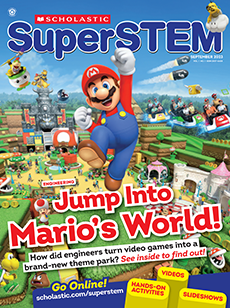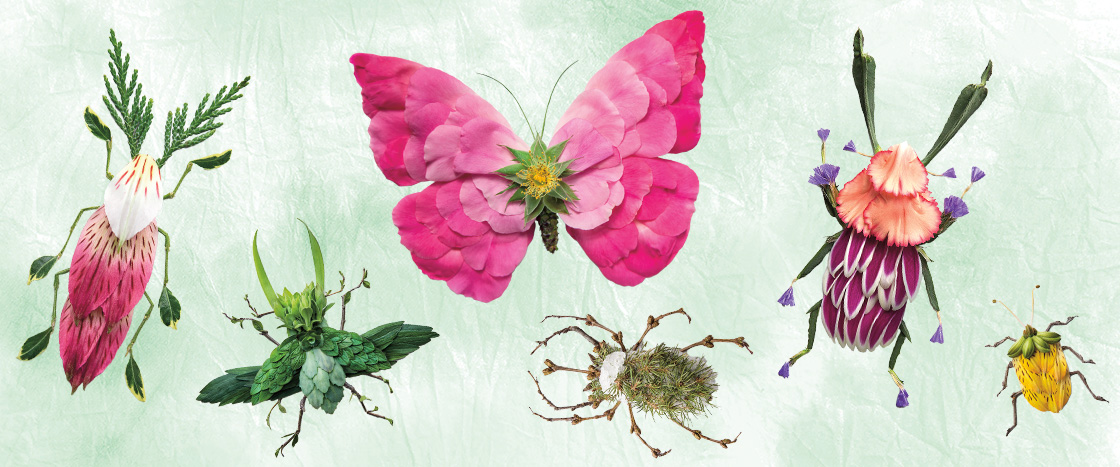One day in 2017, artist Raku Inoue (ee-noh-ooh-eh) saw that strong winds had shaken dark pink petals off a rose bush in his backyard in Montreal, Canada. He had an idea: He arranged the petals in the shape of a beetle on a piece of paper. He used thin green twigs for its legs. “It was so fulfilling that I kept on going,” Inoue says.
In the following months, he created more insects using leaves, seeds, flowers, and other plant parts. He took photos of his creations and posted them on social media. Soon, people began noticing his work!
Since then, Inoue has created sculptures of all kinds of animals, from sloths to tigers. After he’s done, Inoue races to take photos of his artwork before the plant parts wilt. Then he usually tosses the sculpture in a compost bin, where it will break down into nutrient-filled soil.
Photos of Inoue’s animals have appeared in books and magazines, and even on clothes! People interpret his artwork in different ways. For example, some see it as a reminder that we should enjoy and respect nature. Inoue recently spoke to Scholastic about his work.
In 2017, artist Raku Inoue (ee-noh-ooh-eh) stood in his backyard in Montreal, Canada. He saw something that sparked an idea. Strong winds had blown pink petals off a rose bush. He placed the petals on a piece of paper in the shape of a beetle. He used green twigs for its legs. “It was so fulfilling that I kept on going,” Inoue says.
Inoue created more insects in the following months. He made them from leaves, seeds, flowers, and other plant parts. He took photos of his creations. He posted the images on the internet. Soon, people began noticing his work!
Inoue has made all kinds of flower animals since then. They include everything from sloths to tigers. Inoue has to quickly take photos of his artwork. That’s because the plant parts will start to wilt. Then he usually tosses the sculptures in a compost bin. There, the plants break down into nutrient-filled soil.
Inoue’s animals have appeared in books, in magazines, and even on clothes! People view his artwork in different ways. It reminds some people that we should enjoy and respect nature. Inoue recently spoke to Scholastic about his work.


